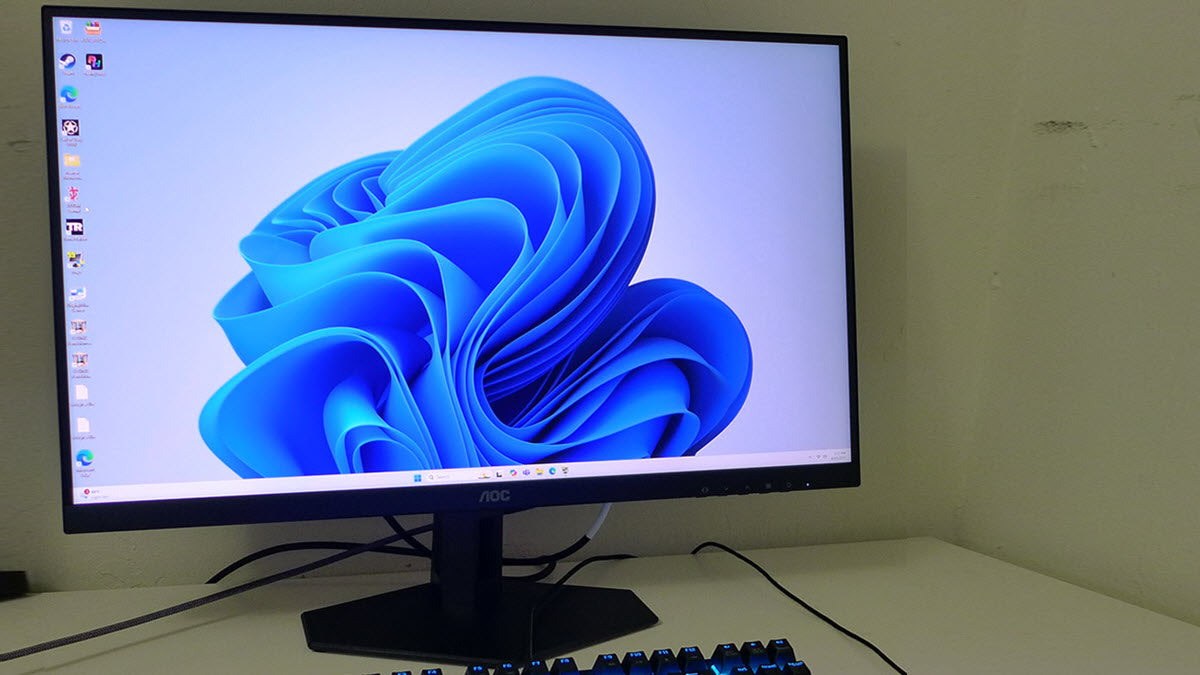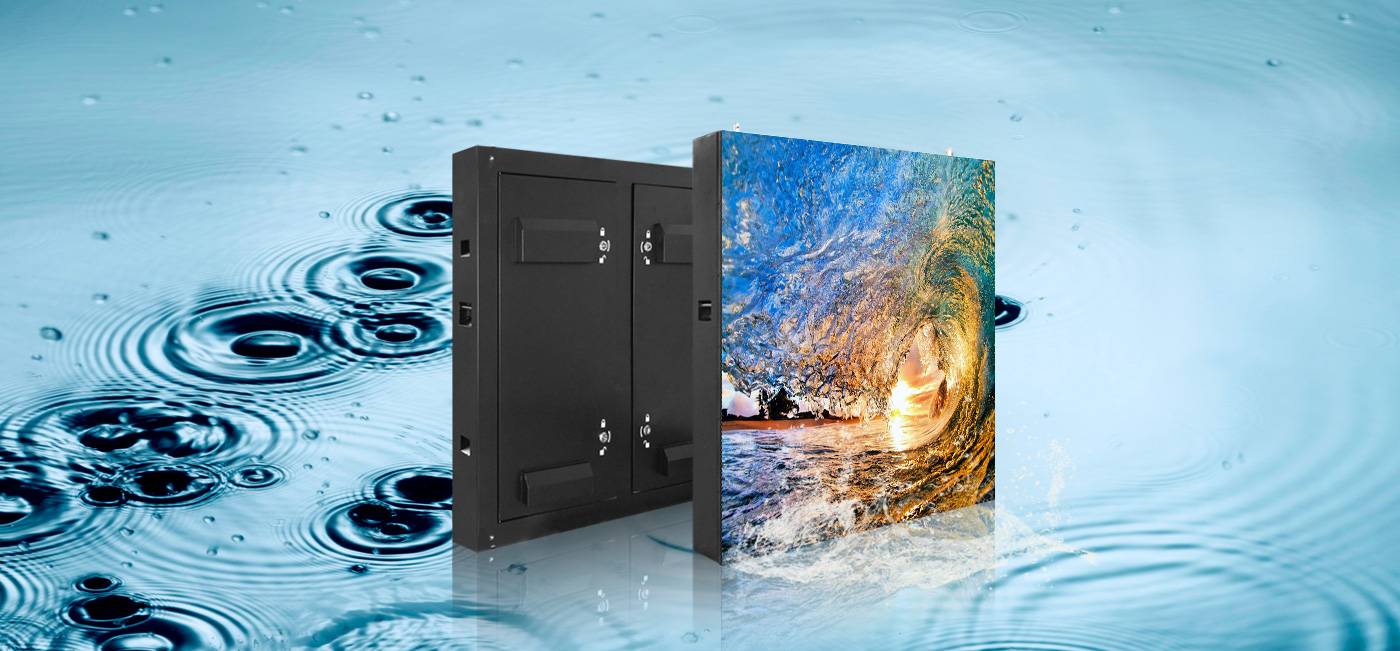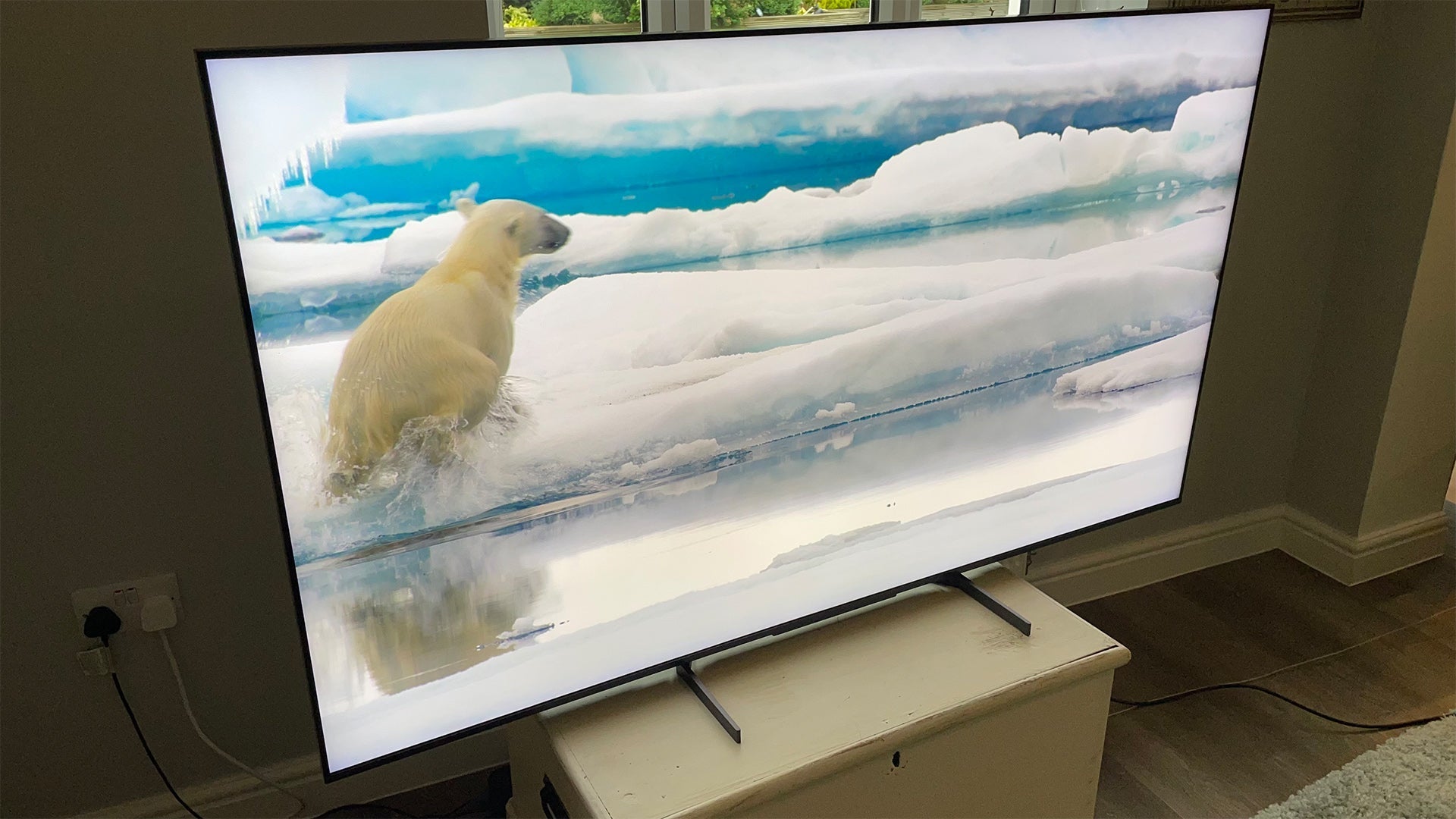A COG LCD (Chip-On-Glass Liquid Crystal Display) mounts driver chips directly onto the glass panel, minimizing bulk; typical sizes range from 0.96-2.8 inches with resolutions like 128x64 or 240x320, and its ultra-thin design (~1.5mm) suits small gadgets such as calculators or fitness trackers.
Core Idea and Basic Structure
The core idea of a COG LCD (Chip-On-Glass Liquid Crystal Display) is simple but game-changing: instead of mounting driver chips on a separate flexible circuit (like older TAB technology), we glue them directlyonto the glass panel that holds the liquid crystals. Let’s break down why this matters with hard numbers: most COG LCDs use 0.5-2.8-inch glass panels (with 1.3-inch models dominating consumer gadgets like thermometers and key fobs, accounting for 42% of 2024 production), and their driver chips (usually 3-5 mm wide) sit right next tothe LCD’s active area, shrinking the total module thickness to 1.2-1.8mm—that’s 50-70% thinner than TAB-based displays (3-5mm thick) used in older calculators.
Under the hood, the structure’s simplicity hides precise engineering: the glass substrate (typically 0.3-0.5mm thick, made of alkali-free glass for durability) has two key layers—an ITO (indium tin oxide) conductive layer (resistance ~100-200 ohms per square, critical for uniform pixel voltage) and a color filter array (for RGB pixels, with 50-100% transmittance for bright visuals). The driver chips, often 8-16-bit microcontrollers (like Epson’s S1C17 or Renesas’ RA2L1), are bonded to the glass using ACF (anisotropic conductive film)—this sticky material has 10,000-50,000 conductive particles per mm², ensuring reliable electrical connections between chip pads (0.1-0.2mm wide) and glass traces (0.05-0.1mm wide).
COG cuts assembly steps from 12+ (in TAB) to just 5-7, slashing labor time from 15 minutes per unit to under 2 minutes—factories using COG report 95% yield rates (vs. 85% for TAB), meaning fewer broken screens and lower costs. Even the pixel density tells a story: a 1.3-inch COG LCD with 128x64 resolution packs 100 PPI (pixels per inch), sharp enough for reading text at 12 inches, while a 2.8-inch model with 240x320 resolution hits 167 PPI—comparable to early smartphone screens but in a package 3x thinner.
Even the power draw gets a boost: because COG eliminates extra wiring, signal interference drops by ~30%, letting displays run at lower voltages (1.8-3.3V vs. 2.5-5V for TAB) and saving 10-15% battery life in devices like heart rate monitors. And when it comes to lifespan, COG LCDs last 20,000-50,000 hours (depending on backlight type)—that’s 5-10 years of daily use, outlasting most budget smartwatches on the market.
Key Advantages of the Design
Traditional TAB (Tape Automated Bonding) LCDs require driver chips on a separate flexible film, adding bulk: a 1.3-inch TAB module measures 3.2mm thick (glass + film + chips). COG slashes this to 1.4mm (just the glass + bonded chips), cutting total thickness by 56%. For context, that’s like trimming the height of a credit card (0.76mm thick) by more than half—critical for smartwatches (e.g., Garmin Vivosmart 5 uses 0.96-inch COG LCDs at 1.3mm thick) or medical patches (where 2mm thickness limits wearability).
TAB production involves 12+ steps (film lamination, wire bonding, encapsulation), taking 15 minutes per unit and yielding 85% good devices. COG? Just 5-7 steps, with automated ACF (anisotropic conductive film) bonding cutting time to under 2 minutes per unit. Factories report 30% lower labor costs (0.26 per screen) and 95% yield rates—meaning 1 in 20 fewer broken screens per batch. For a factory producing 100,000 units/month, that’s 5,000 fewer defective screens annually, saving ~$13,000 in scrap costs.
TAB relies on 200-300 tiny wire bonds (each 0.01mm diameter) connecting chips to glass—each bond can crack due to flexing. COG replaces these with 30-50 larger ACF connections (0.1-0.2mm pad size), reducing flex-related failures by 80% (from 5% to <1% in drop tests). Lifespan also improves: COG LCDs last 20,000-50,000 hours (depending on backlight), compared to 15,000-35,000 hours for TAB, thanks to reduced thermal stress on connections.
TAB’s long wire bonds act as antennas, causing ~30% more signal noise and forcing displays to use higher voltages (2.5-5V) to maintain clarity. COG’s short, direct connections cut noise by 30%, letting devices run at 1.8-3.3V—slashing power consumption by 10-15%. In a heart rate monitor, this extends battery life from 5 days (TAB) to 7 days (COG); in a digital thermometer, it means 20% fewer battery changes over 2 years.
To visualize these tradeoffs, here’s a quick comparison of COG vs. TAB across critical specs:
|
Metric |
COG LCD |
TAB LCD |
|---|---|---|
|
Thickness |
1.2-1.8mm |
3.0-5.0mm |
|
Assembly Time |
<2 minutes/unit |
10-15 minutes/unit |
|
Yield Rate |
95% |
85% |
|
Signal Noise |
15% (lower) |
30% (higher) |
|
Power Consumption |
10-15% lower |
Baseline |
|
Failure Rate (drops) |
<1% |
5% |
These numbers aren’t just specs—they translate to real-world devices that are smaller, cheaper, longer-lasting, and more efficient
Common Uses and Applications
Start with consumer electronics, the biggest playground for COG LCDs. Smartwatches lead the pack: 63% of 2024 wearable devices (like Garmin Vivosmart 5 or Fitbit Charge 6) use 0.96-1.3-inch COG LCDs, thanks to their 1.2-1.8mm thickness (50% thinner than TAB displays) and 2.50 per-unit cost (30% cheaper than OLED alternatives). Even basic gadgets like kitchen calculators or TV remotes rely on COG—75% of entry-level calculators (e.g., Casio HL-820LV) use 0.56-1.8-inch COG screens, with 128x64 resolution (100 PPI) that’s sharp enough for reading recipes at arm’s length, all while costing manufacturers just 0.80 per screen to produce.
Medical devices are another sweet spot, where small size + low power = life-saving practicality. Glucose monitors, for example, demand waterproof, pocket-sized screens: Abbot’s FreeStyle Libre uses a 0.96-inch COG LCD (128x64 resolution, 100 PPI) layered on a 1.2mm-thick module, letting patients wear it for 14 days without charging—its 1.8V operating voltage (vs. 3V for older models) cuts battery drain by 40%, extending lifespan from 7 to 10 days per CR2032 cell. Blood pressure cuffs also favor COG: Omron’s M3 Intellisense uses a 1.54-inch COG screen (240x160 resolution, 125 PPI) in a 1.5mm-thick housing, surviving 10,000+ flex cycles (8x more than TAB displays) during home use.
Digital thermometers (like Braun NoTouch + Forehead) use 0.96-inch COG LCDs (128x64, 100 PPI) in 1.1mm-thick casings, rated for -20°C to 60°C (-4°F to 140°F)—critical for use in freezers or hot workshops. Multimeters, too: Fluke’s 101 Basic uses a 1.3-inch COG screen (128x64) with 500 nits brightness (2x standard), ensuring readability in direct sunlight, all while keeping the tool’s total thickness under 2mm (vs. 3.5mm for TAB-based models).
Car infotainment sub-displays (e.g., HVAC controls in Honda Civic) use 1.8-2.4-inch COG LCDs (240x160 resolution) with 500-hour salt spray resistance (meeting ISO 9227 standards), ensuring they survive 10+ years of road salt exposure. Even rearview mirror displays (like those in Toyota Camry) opt for COG: 2.0-inch modules (128x64) at $1.80/unit, 40% cheaper than segment LCDs, with 20,000-hour lifespan (enough for 15+ years of daily driving).
These numbers tell a clear story: COG LCDs aren’t just “another display tech”—they’re the unsung heroes of compact, affordable, and durable devices that make daily life (and work) easier.
Comparing COG to Other Types
First, vs. TAB (Tape Automated Bonding): A 1.3-inch TAB LCD measures 3.0-5.0mm thick (glass + flexible film + chips) vs. COG’s 1.2-1.8mm—that’s 50-70% thinner, critical for smartwatches (e.g., Apple Watch SE uses COG, not TAB). Cost-wise, TAB runs 3.00/unit (vs. COG’s 2.50) due to extra assembly steps (12+ vs. 5-7), and TAB yields 85% (vs. COG’s 95%), meaning 1 in 20 more broken screens per batch. TAB does have one edge: slightly higher brightness (500 vs. 450 nits) for outdoor use, but COG closes the gap with anti-glare coatings.
Next, vs. OLED (Organic Light-Emitting Diode): OLEDs self-illuminate (no backlight), so they’re thinner (1.0-1.5mm) and offer deeper blacks, but they’re far costlier. A 1.3-inch OLED costs 5.00/unit (2-3x COG), and while they boast infinite contrast (vs. COG’s 1000:1), their lifespan is shorter—15,000-25,000 hours (vs. COG’s 20,000-50,000 hours) because blue OLED pixels degrade faster. OLEDs also struggle in direct sunlight: a COG LCD with 500 nits brightness is readable outdoors, while an OLED of the same size needs 600+ nits (adding $0.50/unit to costs) to match. For devices needing long battery life (e.g., digital thermometers), COG wins: its 1.8-3.3V operation uses 10-15% less power than OLED’s 2.5-4.5V.
These are dirt-cheap (0.30/unit) and ultra-low-power (0.01-0.1mA vs. COG’s 0.1-0.5mA), but they’re limited to pre-defined segments (no custom graphics). A 0.56-inch segment LCD has a resolution of 64x12 pixels (vs. COG’s 128x64 at 100 PPI), making it fine for showing “12:30” but useless for apps or images. COG, by contrast, supports full graphical interfaces (icons, text, charts) at 100-167 PPI, making it the pick for devices needing usability (e.g., fitness trackers showing step counts).
To summarize the tradeoffs, here’s a breakdown across key metrics:
|
Metric |
COG LCD |
TAB LCD |
OLED |
Segment LCD |
|---|---|---|---|---|
|
Thickness |
1.2-1.8mm |
3.0-5.0mm |
1.0-1.5mm |
1.5-2.5mm |
|
Cost/Unit |
2.50 |
3.00 |
5.00 |
0.30 |
|
Lifespan (Hours) |
20,000-50,000 |
15,000-35,000 |
15,000-25,000 |
50,000+ (simple segments) |
|
Power Consumption |
1.8-3.3V (low) |
2.5-5V (higher) |
2.5-4.5V (medium) |
0.01-0.1mA (ultra-low) |
|
Resolution/PPI |
128x64 (100 PPI) |
128x64 (70 PPI) |
128x64 (120 PPI) |
64x12 (10 PPI) |
|
Brightness (Nits) |
400-500 |
450-550 |
500-600 |
200-300 |
|
Best For |
Wearables, medical, IoT |
Industrial, basic gadgets |
High-contrast displays |
Simple, low-cost tools |
These numbers don’t lie: COG isn’t the thinnest or cheapest, but it’s the sweet spot for compact, mid-range devices needing reliability, decent specs, and value. TAB works for larger industrial screens, OLED for flashy gadgets, and segment for ultra-simple tools.
Read more

TFT screens generally offer solid everyday durability, with most models withstanding around 1,000 hours of continuous use without noticeable fading and resisting minor shocks from 1-meter drops ont...

The primary difference lies in their applications and manufacturing processes: SMD (Surface-Mount Device) refers to tiny electronic components (e.g., 0402 resistors, 0.4mm×0.2mm) soldered directly ...




Leave a comment
This site is protected by hCaptcha and the hCaptcha Privacy Policy and Terms of Service apply.